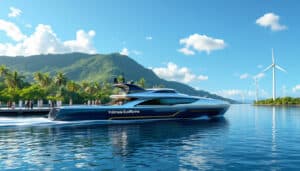We use cookies and data to provide and maintain Google services. This includes tracking outages and protecting against spam, fraud, and abuse. We also measure public engagement and site statistics to understand the usage of our services and improve their quality.
By accepting all options, we use cookies to develop and improve new services, measure the effectiveness of advertisements, and display personalized content based on your settings. Additionally, personalized ads are offered based on your previous searches and activity on this browser. If you choose to reject everything, cookies will not be used for these additional purposes. Non-personalized content depends on what you are currently viewing, your activity in your active search session, and your general location. For an age-appropriate experience, specific settings are applied if necessary. You can select “More options” for additional information, including details on managing your privacy settings. Also, visit g.co/privacytools at any time to adjust your preferences.

Table of Contents
ToggleUCSL delivers its first green cargo ship to Norway as part of the Make in India initiative
The delivery of the first green cargo ship by UCSL to Norway marks a significant milestone in sustainable maritime transport. This gesture symbolizes not only UCSL’s commitment to eco-innovation, but also the strengthened international cooperation under the Make in India initiative. By adopting environmentally friendly technologies, UCSL meets the growing demands to reduce carbon emissions in the maritime sector.
What is the impact of the Make in India initiative on the maritime sector?
The Make in India initiative aims to promote local manufacturing and attract foreign investments in various sectors, including maritime. By collaborating with international partners like Norway, UCSL helps to invigorate the Indian maritime ecosystem while adopting sustainable practices. This synergy facilitates the transfer of advanced technologies and expertise, thereby strengthening India’s capacity to produce world-class eco-friendly ships.
Moreover, the initiative fosters the development of green technologies and encourages the adoption of innovative solutions such as digitalization, which is essential for optimizing maritime operations. To learn more about digitalization in the maritime sector, check out this article on Australia and Singapore.
What are the ecological features of the cargo ship delivered by UCSL?
The green cargo ship from UCSL integrates several sustainable technologies aimed at reducing its environmental footprint. Among these innovations is a hybrid propulsion system that combines electric and traditional engines, allowing for reduced fuel consumption. Furthermore, the ship is equipped with solar panels that supply part of its energy needs, thus decreasing CO2 emissions.
The ship’s design also includes recyclable materials and advanced waste management systems, ensuring that freight operations are conducted responsibly. These features make this ship a model for the future of maritime transport, aligned with global sustainable development goals.
How does the India-Norway collaboration strengthen this project?
The collaboration between India and Norway represents a strategic partnership in the maritime domain. Norway, recognized for its expertise in eco-friendly marine technologies, brings essential know-how to UCSL. This cooperation allows for the combination of resources and skills from both nations, thereby accelerating the development of innovative solutions for greener maritime transport.
Furthermore, this alliance promotes cultural and technological exchanges, facilitating the establishment of high standards in sustainability. UCSL also benefits from access to European markets through Norway’s extensive network, strengthening its position on the international stage.
What innovative technologies are used for sustainable maritime transport?
The green cargo ship from UCSL is equipped with multiple innovative technologies aimed at optimizing energy efficiency and reducing pollutant emissions. Among these, the hybrid propulsion system allows for flexibility in the use of energy sources, adapting consumption according to navigation needs. The solar panels installed on the deck capture solar energy, thereby contributing to the ship’s energy autonomy.
Intelligent energy management
An advanced energy management system supervises energy consumption and production in real-time, ensuring optimal use of available resources. This intelligent approach minimizes energy losses and adjusts operations according to environmental conditions.
The integration of technologies like the Internet of Things (IoT) also allows for continuous monitoring of the ship’s performance, facilitating proactive maintenance and reducing the risk of failures. To explore more about technological innovations in the maritime sector, check out this article on ethical maritime trade.
What are the economic and environmental benefits of this green ship?
The introduction of green cargo ships like UCSL’s brings significant benefits both economically and environmentally. Economically, these ships reduce operational costs due to optimized fuel consumption and less frequent equipment maintenance. In the long term, investing in sustainable technologies can also attract grants and tax incentives, enhancing the profitability of maritime businesses.
In terms of the environment, reducing greenhouse gas emissions is a crucial issue in the fight against climate change. UCSL’s green ship contributes to this effort by significantly reducing CO2 emissions and other air pollutants. Additionally, the use of recyclable materials and efficient waste management ensures a minimized ecological footprint.
These advantages strengthen UCSL’s position as a leader in the sustainable maritime transport sector, while also meeting the growing expectations of consumers and regulators regarding environmental responsibility.
What are the future prospects for eco-friendly maritime transport?
The success of UCSL’s first green cargo ship paves the way for wider adoption of sustainable technologies in the maritime sector. In the future, an increase in the number of eco-friendly ships can be expected, supported by favorable government policies and private investments. Continuous technological evolution, particularly in the field of renewable energies and digitalization, will play a key role in this transition.
Moreover, international collaboration, such as that between India and Norway, will be essential for sharing best practices and accelerating the development of innovative solutions. For an in-depth analysis of the impact of maritime transport on global trade, check out this article.
Finally, the growing awareness of environmental issues among sector stakeholders encourages more companies to invest in sustainable fleets. By delivering this green ship, UCSL positions itself as a pioneer in this ecological revolution, inspiring other maritime companies to follow this virtuous example.
How does UCSL integrate sustainability into its daily operations?
Beyond building eco-friendly ships, UCSL is committed to integrating sustainability into all of its daily operations. This includes implementing rigorous environmental management practices, such as recycling waste on board, using water efficiently, and reducing energy consumption in offices and land facilities.
The company also encourages its employees to adopt eco-responsible behaviors, offering training and awareness programs on the importance of environmental protection. By collaborating with suppliers and partners who share its values, UCSL creates a sustainable supply chain, thereby enhancing its positive impact on the maritime ecosystem.
What challenges does UCSL face in developing green ships?
Developing green ships poses several challenges, both technical and economic. One of the main obstacles is the high initial cost of sustainable technologies, such as hybrid propulsion systems and renewable energy sources. However, UCSL invests in research and development to reduce these costs over the long term through process optimization and mass production.
Another challenge lies in adapting port infrastructures to accommodate eco-friendly ships. UCSL works closely with port authorities to develop facilities compatible with new technologies, such as charging points for electric propulsion systems. This collaboration is essential to ensure a smooth transition to greener maritime transport.
Finally, strict international regulations on emissions and environmental standards require constant monitoring and quick adaptation of operations. UCSL is committed to complying with these regulations by collaborating with experts and investing in technologies that meet international standards.
How does this project influence global maritime trade?
The introduction of green cargo ships like UCSL’s has significant repercussions on global maritime trade. By reducing carbon emissions, these ships help create a more environmentally friendly supply chain, aligned with the sustainable development goals of nations. This transition to more sustainable practices can also influence international trade policies, encouraging other companies to adopt similar technologies.
Moreover, the UCSL initiative is part of a global trend aimed at promoting a circular economy and minimizing the ecological impact of business activities. By investing in advanced technological solutions, UCSL not only enhances its operational efficiency but also encourages other sector players to follow this eco-responsible path.
For a global perspective on the impact of maritime transport on worldwide trade, refer to this detailed article.
What is UCSL’s future in the sustainable maritime industry?
With the delivery of its first green cargo ship, UCSL positions itself as a leader in the sustainable maritime industry. The company plans to expand its fleet of eco-friendly ships, continually integrating the latest technological advancements to optimize its environmental performance. UCSL also aims to strengthen its international partnerships, facilitating knowledge sharing and collaborative innovation.
By investing in research and development, UCSL aims to discover new solutions to enhance energy efficiency and further reduce its environmental impact. The company is also exploring opportunities to integrate alternative energies, such as green hydrogen, into its future ships.
Furthermore, UCSL is committed to playing an active role in promoting policies conducive to maritime sustainability, collaborating with international organizations and regulators to establish high standards of environmental performance. This proactive vision ensures that UCSL remains at the forefront of ecological innovation in the maritime sector.
To keep up with the latest developments and initiatives from UCSL, and to understand the major shifts in the maritime sector, check out this article on the inauguration of a new office in Dubai.









